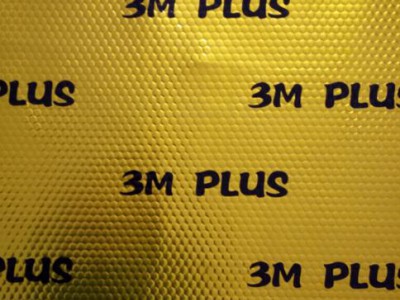Butyl Rubber Car Sound deadening Mat in sound damping
产品Description:
Sound Deadener material based on butyl rubber, and covered with aluminum sheet on the face. It has good performance on adhesion, weather resistance, aging resistance and waterproof. So it is one of the best environmentally friendly products that could be used in various commercial vehicles for shock absorption, reinforcement, noise reduction and sound insulation.
Basic performance :
(1) Appearance of black sheet, aluminum foil backing.
(2) Density: 1.65 g/cm3, mainly based on customer's requirement.
(3) Heat resistance: 90 degrees Celsius for 2 hours, with no flowing, cracking and deformation.
(4) Low temperature flexibility: -40 degrees Celsius, there is no cracks.
(5) Peel strength: ≥17N/cm
(6) Acoustic loss factor: ≥0.21.
Application:
Use on rear decks, doors, floors and the floor of your trunk to get more bass, more music, lower road noise and better sound.
Shuangyuan car sound deadening pads quiets annoying road noise, improves a speaker’s dynamic range, and makes for a more comfortable driving experience. You can quiet down the noise, and get better sound.
Package:
1, General Packaging : 25 pieces / carton ( Free )
2, Gift box without printing: 10pieces / box ( Extra charge )
3, Gift box with printing: 20pieces / box ( Extra charge )
Car Sound Insulation of the Automobile
The four doors double, back trunk, chassis, four-wheels and wings board, engine cover
Four doors:it forms a case body in the door board and helps the working efficiency of the horn and reduces the shock of the car door and the wind’s noise.
Back trunk:it reduces the noise of the road and the steel; reduce the shocking of the air.
Chassis:Foster the chassis and deduce the noise
Four- wheels and wings board:
it is the most efficient way to reduce the noise from the wheel
Engine cover:
it will separate parts of the noise from the engine and cut off the heat. Also it will prevent the aging of the engine cover and extend the working time.
How to Installation
Step1-
Use scissors, knife or die to cut the mat to the desired size and shape before removing the release liner.
Step 2-
Remove dust, grease, moisture, and other foreign matter from the application surface.
Step 3-
Peel off the release liner. The simplest application technique is to bend the mat slightly and attach it along its shortest edge. Press the mat firmly into place, using a roller for larger pieces. The roller reduces the risk of leaving air pockets, which reduce sound damping capacity. The temperature of the mat and application surface should not be below room temperature during fitting. Heating the material is not necessary.









